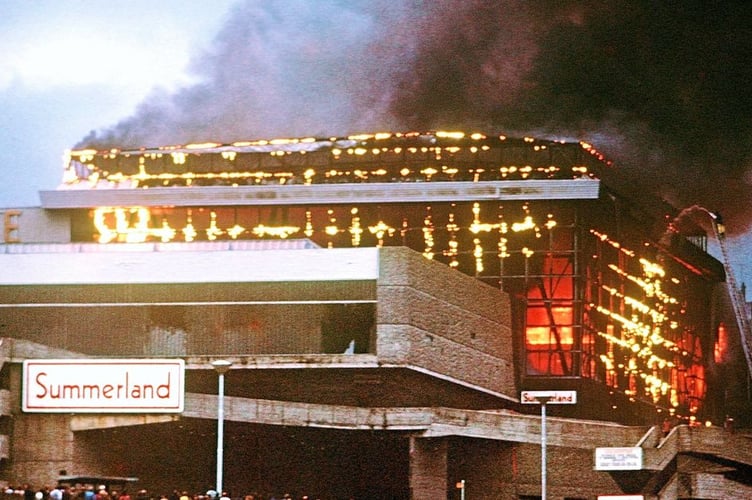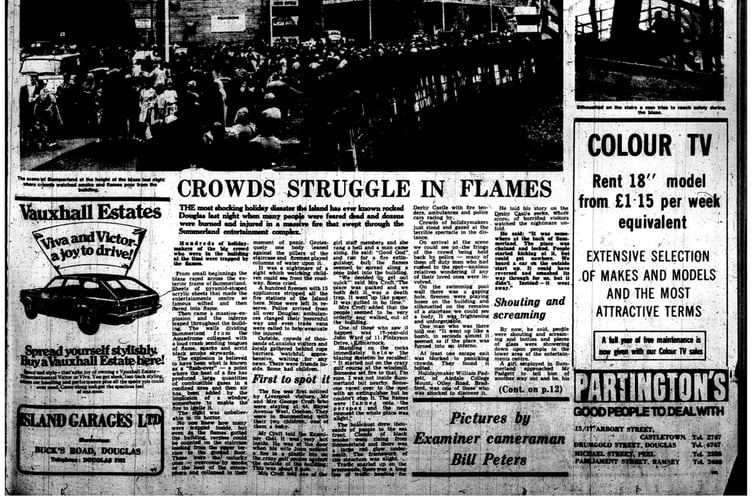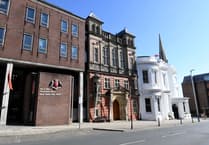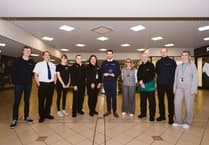The loss of 50 lives at the Summerland fire in 1973 is without doubt the biggest tragedy the Isle of Man has endured in living memory.
Men, women and children lost their lives in the blaze on a night they were meant to be enjoying a wide range of entertainment and activities at the extremely popular holiday resort on Douglas Promenade.
From the failures of the building’s architecture, the events of the night itself and the inquiries that followed, the Summerland tragedy garnered a plethora of media attention and recognition from all over the world.
Here, we look at the sequence of events, the eyewitness accounts and the tabloid portrayal of the tragedy that shook the Isle of Man to its core.
The fire
On Thursday, August 2, 1973, the Summerland holiday resort was operating as normal, with 3,000 holiday-makers pouring through the doors before an expected evening of dance, games and music.
The fire started at roughly 7.30pm, when three young boys who were smoking on the miniature golf course set fire to an unused kiosk. This kiosk collapsed onto the outer wall of the Summerland building, with this wall being made entirely out of galbestos – a material with no fire-resistant qualities.
The fire then spread to the inner material which was also highly combustible, igniting the acrylic sheeting that covered the rest of the building and causing the fire to spread across the resort at great speed.
The visitors at Summerland were not made aware of the fire until they could see it approach them due to the lack of an alarm system. Mass hysteria ensued, and with many fire exits locked and bolted, everyone headed to the main entrance, causing a crush.
The scenes were desperate inside the building, with eyewitness accounts recalling molten (melted plastic from the acrylic sheeting) falling onto the large crowds of people and severely injuring them while vying for a way out.
The emergency services were not alerted to the fire until 20 minutes after it started. A passing taxi driver and the captain of a ship two miles offshore were the first people to call 999, with the captain saying ‘it looks as if the whole of the island is on fire.’
Les Quayle, a firefighter who was on duty that night, said: ‘All we knew was that there was something on fire either at or near Summerland that evening.
‘It was quite common for the gorse behind the Summerland building to catch fire, so we thought that might be the case.
‘It was only when we arrived at the scene that we realised it was the actual building that was on fire and not the gorse behind it.’
All 16 fire engines on the island were sent to the scene, while 93 of the 106 available firefighters were called to action.
Alan Christian and John Boyde were two other firefighters who played a leading role in the rescue mission that evening.
Mr Christian was the driver of the first fire engine to arrive at the scene, with Mr Boyde joining him not long afterwards in an engine from Laxey.
After breaking down a locked fire exit on the north side of the building, Mr Christian and Mr Boyde (along with many other firefighters) managed to retrieve tens of unconscious people from inside, attempting to resuscitate them outside with help from Richard Hamm, an off-duty doctor.
Mr Boyde said: ‘We managed to get the door open, and when we opened it we saw that there were people everywhere. Our first priority was to get everyone out as soon as we could.’
Mr Christian added: ‘Dr Hamm was a practising GP who lived above Summerland. He joined us at the scene and helped us to check for heartbeats using his stethoscope. I had a resuscitation machine in my fire engine that we used to resuscitate as many people as we could.’
The rescue efforts continued throughout the evening, with the last survivor being retrieved roughly two hours after the fire started.
Overall, 50 people were killed in the fire, with 80 others injured.
The injured survivors were rushed to Noble’s Hospital, with some survivors also being sent to hospitals in the UK such as Alder Hey in Liverpool.
At 1am, Chief Constable Frank Weedon addressed the public on Manx Radio, describing the fire as ‘a great tragedy for the island’ and confirming that at least 20 people had died.

The aftermath
Every corner of Noble’s Hospital, then on Westmoreland Road, Douglas, was used to treat the critically injured, with corridors and rest lounges converted into temporary wards for the many patients who were rushed to the hospital in a number of ferrying ambulances.
Off-duty doctors, nurses and holidaying practitioners were quick to arrive at the hospital and offer their much-needed help.
The secretary at the hospital at the time, Ernest Kneale, said: ‘We coped, but it was very, very hard. There are contingencies in place here as there is in every hospital for major disasters.
‘Obviously most of the people brought in were suffering from burns, many of them quite horrific, and the theatre was in use non-stop for several hours.
‘At one point we thought that the number of fatalities would exceed 200 or 300, so it is a relief to all of us that this was not the case.’
A temporary mortuary was established at St George’s Hall in Douglas the day after the fire, with members of the public going there to identify the bodies of their family members.
Social services and the tourism office on the island set up emergency accommodation while offering advice and financial help to anyone who needed it.
In the days that followed the fire, the police were desperate to find the three young boys who they suspected had started the fire deliberately, with many eyewitness accounts coming forward to say they had seen the youths at the kiosk before the fire had started.

These three boys were soon found and appeared in front of the juvenile court in Douglas, where they were charged with the ‘wilful damage to the lock on the kiosk.’ The boys made it clear in court that the starting of the fire had been entirely accidental.
Cyril Pearson, the island’s chief fire officer, was quick to clarify that the fire precautions were adequate when Summerland was inspected in May 1973.
Mr Pearson said: ‘Every aspect of fire protection was considered by me. It would not have got a licence if it had not been met with my approval.’
The first inquiry into the Summerland tragedy began on Tuesday November 20, 1973, lasting three days until Thursday, November 22. Mr John Newey, the Queen’s Council, led the inquiry and made the following points after examining the facts:
•The fire alarms at Summerland had failed to operate
•The Summerland staff had been given no instruction with regards to what should be done in the event of a fire
•It was normal practice for certain doors at Summerland to remain locked
•The fire started in the kiosk outside, and within six or seven minutes the entirety of the building was in flames
•Two members of the Summerland staff joked with audiences when smoke was first spotted, so many people returned to their seats
•An internal letter circulated to Lennig Chemicals Limited, the manufacturers of oroglas (the acrylic sheeting used at Summerland), stated that the way the material could behave in a fire wasn’t easy to predict, and that it could burn in ‘a frightening manner’
•A warning had been issued that if oroglas was to be used in a large dome, it should be used in conjunction with a working sprinkler system, which Summerland did not have.
The findings from the inquiry pointed towards architectural shortcomings, with a further inquiry in January 1974 also proving that Summerland was not built with the correct fire provisions in place.
Professor David Rasbash, the professor of fire engineering at Edinburgh University, provided evidence at this inquiry which showed that doorways and stairways were too narrow, there were an insufficient number of exits and that staff were not trained well enough to deal with a fire emergency.
Mr Rasbash solemnly concluded that ‘provisions made for the safety of escapees in the event of a fire emergency were inadequate’.
The circumstances surrounding the Summerland tragedy are still discussed in parliament today. Justin Madders, a labour MP for Ellesmere Port and Neston, raised the topic to Penny Mourdant, the leader of the House of Commons on Thursday, June 29.
Mr Madders said: ‘The Summerland tragedy could have been avoided, but despite this the aggrieved families are still fighting for recognition and an apology.
‘The materials that were used by the architects were known to be a fire risk, but these materials were used anyway either through negligence or deception.
‘It is clear that regulations were bent. The planning submissions contravened building bylaws and failed to have the requirement of the external walls having a fire resistance of over two hours.
‘There were multiple failings across the board. Any one of these failings on their own could have proved disastrous, but all of them put together makes it clear to see how this tragedy unfolded.’
The media
The media’s portrayal of the Summerland fire was varied, with newspapers in the island and in the UK all taking different approaches in their reporting of the tragedy.
Some of the headlines were arguably hyperbolic, such as the Isle of Man Examiner’s ‘many die in holocaust’, but others chose to cover the basic facts in the immediate aftermath of that night..
The Sun led with ‘disaster in fun centre’, while the Daily Mail described Summerland as ‘the holiday death trap’.
The Examiner also had other articles on the next day, with headlines such as ‘Summerland fire horror’, ‘Summerland erupts like a volcano’ and ‘crowds struggle in flames.’
The Examiner chose to use a variety of descriptive language to portray the fire, writing: ‘The walls dividing Summerland from the Aquadrome collapsed with a loud crash, sending tongues of flame, sparks and acrid black smoke skywards.’
The Daily Mail decided to cover a variety of different angles on one of their pages, with a column devoted to the police’s search for the three boys at the kiosk, a column which paid tribute to the youngest victim of the fire and another column describing how the hospital coped with the inundation of patients.
In the aftermath of the tragedy, the media turned their attention towards the cause of the fire, the Times leading with ‘boys sought as police say Isle of Man fire was probably deliberate.’
The Examiner then also quoted the inquiry three months later, by leading with the quote ‘the fire was started deliberately’.
Soon afterwards, the Times led with ‘Summerland design might have been banned on the mainland’ two days after the disaster.
The Sunday Times’s first edition after the fire also went down this route, with the headline: ‘Summerland men planned “fire-plastic” buildings for Britain’.
The media also reported on the tragedy whilst it was unfolding. Alan Jackson, a presenter for Manx Radio, happened to be passing by Summerland when the fire first broke out, and proceeded to describe the events as they unfolded live on air: ‘It’s absolute pandemonium here. Summerland is ablaze and burning down. The fire is spreading very rapidly indeed.’
Mr Jackson then asked various onlookers if they knew how the fire had started, but no one seemed to know. Hours later, Mr Jackson returned live on air to provide the Manx public with an update:
‘There is a certain amount of calm that has overtaken proceedings here. The place is just a shell. The framework is like it is made out of matchboxes.
‘Thick black smoke is still belting over Douglas Harbour. There are still plenty of shocked faces, obviously, from people who were one minute enjoying all the amenities of Summerland and now this.
‘In the space of half an hour, the place just does not simply exist.’
The survivors
With an attendance of roughly 2,500 at Summerland on the evening of the fire, there were more than 2,000 survivors of the tragedy who suffered lasting physical and emotional trauma.
Some of these survivors have been brave enough to come forward and speak about their experience that night.
Jackie Hallam, a survivor whose mum and best friend died that night, said: ‘There was no luck involved in getting out of there. People say I was lucky but it was difficult and hard. I had to jump out of a window to escape and I left my mum and best friend behind. It was horrendous.
‘I would say that we were just unlucky to have gone there in the first place.’
Another survivor was Chris Mannion, a musician who was performing at Summerland that evening.
Chris said: ‘When the members of staff first discovered the fire, they asked me to keep playing the piano for a bit longer while they sorted it out. We all then realised that it was much bigger than initially thought.
‘One thing I would say is that you cannot judge people in a situation like this.
‘No one could’ve possibly imagined this happening and so it is unfair to judge their actions.’
As well as the large number of survivors, there were a number of people whose families had gone to Summerland that evening while they stayed at home. While some of these family members may have survived and returned to their loved ones, this was not always the case.
Richard and Elizabeth Cheetham from Liverpool visited Summerland with their daughter June, while their other daughter Heather Lea (nee Cheetham) stayed at home. Heather’s mum, dad and sister all died that night.
Heather said: ‘They went on holiday to the Isle of Man and I stayed at home to look after my grandmother.
‘When I heard about the fire and didn’t hear from them to tell me they were OK, I knew they wouldn’t be coming home.’
The Summerland fire tragedy will always be seen as a seismic event in the history of the Isle of Man. It was unlike anything the island had ever seen before, while bringing the Manx public together in a period of shared mourning and remembrance for those entirely innocent people who unreasonably lost their lives.
To mark the 50th anniversary of the disaster, there have been and will be a number of events that aim to pay tribute to the victims of that night.
A memorial concert took place on Saturday at the Villa Marina, while a service of remembrance was held at St George’s Church in Douglas on Sunday.
There will be a minute’s silence at the Summerland site at 7pm on Wednesday, August 2, exactly 50 years since the fire began.




